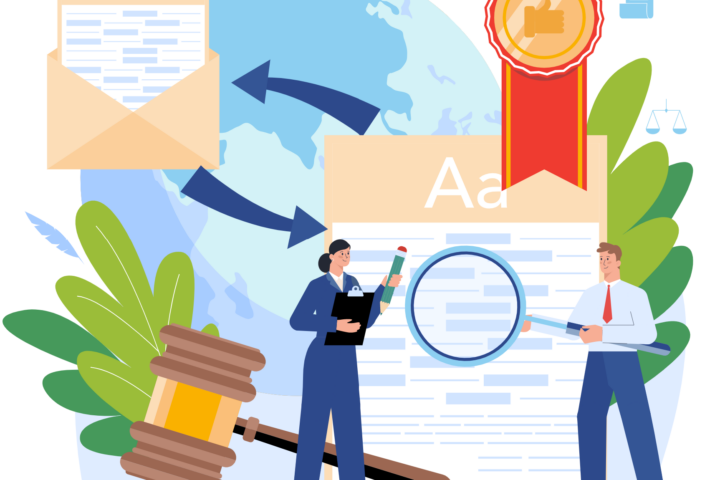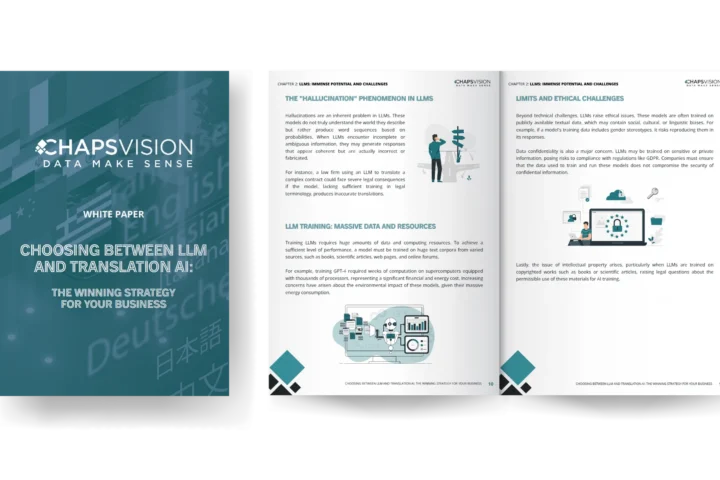As globalization continues, more companies must work in a variety of countries and markets. With each market, government, and language, there are different requirements and unique challenges, but one of the largest problems is legal translation.
Here’s your guide to what legal translation is, why it’s relevant, and how SYSTRAN can help you meet your translation needs.
What Is Legal Translation and How Does It Work?
Legal translation translates legal documents and materials from one language to another. It focuses heavily on respecting and retaining the original meaning of the document because of its sensitive legal nature.
Legal translation is different from normal document translation because the initial documents can be heavy with legal phrases, terms, and grammar. This formal and technical language of legal documents can be seen as an additional language that a translator has to understand both in the initial language of the document, as well as the language it is being translated into. In the translated document, the wording must respect and follow the formal and technical requirements of legal documents in the target language while maintaining the purpose, voice, and intent of the original document.
This means legal translation can be seen as requiring the mastery of four languages to translate correctly. Not only does a translator need to know the common uses of the two languages they are translating, but they must also know the technical legal grammar, vocabulary, and style of both languages to make a proper translation.
How Is Legal Translation Used?
The most common forms of legal translation are in:
Intellectual property
These translations are mainly used when designing a product. This is most common for international brands applying for patents. Most companies will apply for a patent or copyright in their home country, but that patent is not recognized in other countries. Patent applications in each country are essential for any international company.
Contracts
These translations include work, business, and consumer contracts. Properly translated contracts ensure both sides of a professional relationship establish clear expectations.
Terms and conditions
Terms and conditions apply to businesses, organizations, and consumers. Consumers need to have access to the terms and conditions, so they are informed about their obligations when they give their consent, register for a service, or purchase a product that handles their data.
Legal market research
Brands are expected to understand not just the consumer in a target market, but also the government and relevant legal requirements. For an international company, it’s important for everyone on their team to have access to essential information translated to their language of choice.
Each market has unique regulations for both foreign and local businesses.

In addition to those most common translated documents, legal translation can also translate:
- Depositions
- Court and witness transcripts
- Wills and trusts
- Confidentiality agreements (non-disclosure agreements)
- Policies
- Complaints
- Legal statements
- Licenses
- Legal disclaimers
Why is Legal Translation Important?
Legal translation is important because legal jargon and structure are almost a language of their own and can carry legally binding information. For legal documents, the details matter, and it’s essential to translate all the necessary information and wording perfectly. A document that has been mistranslated, even if there are only a few errors, can directly affect a person’s rights and the outcomes of legal cases.
What Are the Difficulties in Legal Translation?
The wording in legal documents is critical, and even the smallest words can make a big difference in the overall message. For example, in a contract there’s a difference between “shall,” “can,” “may,” “will,” or “must.” If a contract states a person can do something, it means the action is one route they can take if they want. But if the same phrase states a person shall take the same action, it’s a requirement that must be completed.
Legal translation has to understand the intent and purpose of the initial document and then clearly and concisely retain that purpose in a new language without taking away or adding meaning.
Another issue with legal translation is that the format of the document must be retained. Translators do not have the freedom to change the sentence order or paragraph structure in their translation. Each sentence and each word are vital in a legal document and changing the structure of the document can change the organization or meaning of the piece.

SYSTRAN Makes Legal Translation Easy
A correctly translated document should have the exact same meaning, voice, and style as the initial document. SYSTRAN’s neural translation software provides machine learning translation software to meet your translation needs. It acts as a bridge between hyper-technical legal jargon and end-users to give you the best translation possible. It’s important to comply with laws and regulations when it comes to legal translation and SYSTRAN is compliant with all privacy laws including General Data Protection Regulation (GDPR).
Find out more about SYSTRAN and the benefits of our partnership program today.






